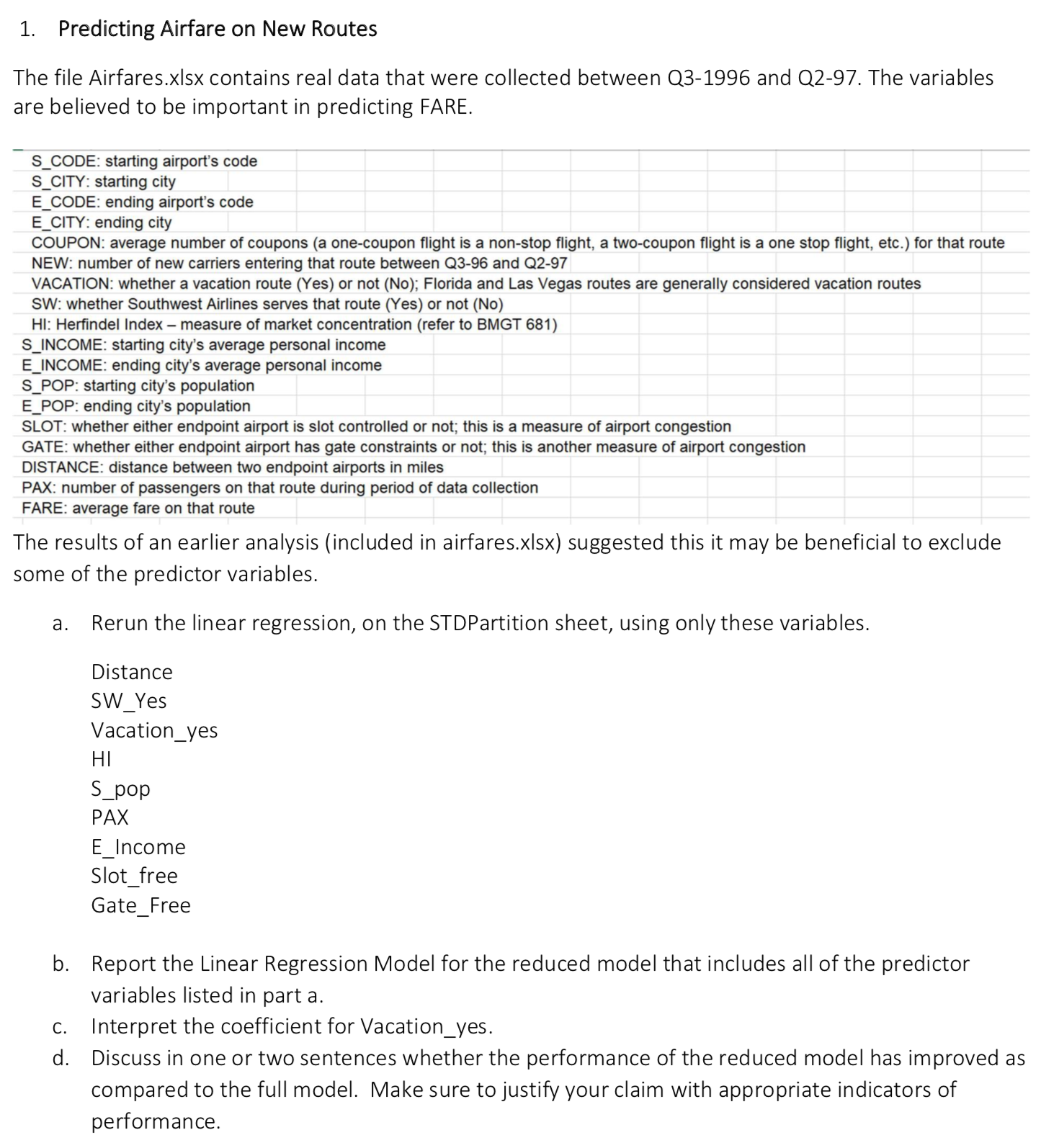Answered step by step
Verified Expert Solution
Question
1 Approved Answer
Predicting Airfare on New Routes: 1. Predicting Airfare on New Routes The file Airfaresxlsx contains real data that were collected between 031996 and (1297. The
Predicting Airfare on New Routes:

Step by Step Solution
There are 3 Steps involved in it
Step: 1

Get Instant Access to Expert-Tailored Solutions
See step-by-step solutions with expert insights and AI powered tools for academic success
Step: 2

Step: 3

Ace Your Homework with AI
Get the answers you need in no time with our AI-driven, step-by-step assistance
Get Started


